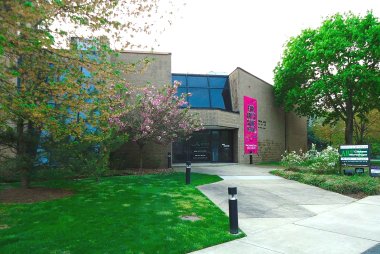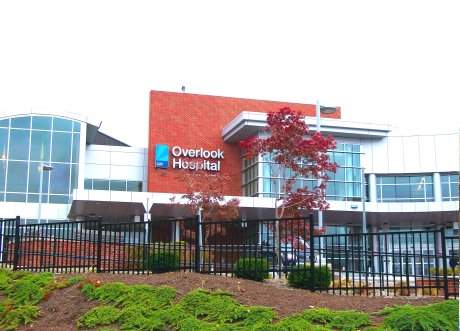Neighborhood
An Introduction to Summit, New Jersey
An Introduction to Summit, New Jersey
Summit is one of New Jersey's most economically and culturally diverse communities with approximately 21,000 residents. This town is nestled in the hills of the Watchung Reservation with six square miles of hills, tree-lined streets, open spaces, and an active community-oriented business district. The city is located on a ridge in northern-central New Jersey, within the Raritan Valley and Rahway Valley regions in the New York metropolitan area. At the 2010 United States Census, the city's population was 21,457. This was an increase of 326 (+1.5%) from the 21,131 counted in the 2000 Census. This number had increased by 1,374 (+7.0%) from the 19,757 counted in the 1990 Census.
Originally incorporated as Summit Township by an act of the New Jersey Legislature on March 23, 1869, from portions of New Providence Township (now Berkeley Heights) and Springfield Township, Summit was reincorporated as a city on March 8, 1899. Possible derivations of Summit's name include its location atop the Second Watchung Mountain; the Summit Lodge. It was the house to which jurist James Kent moved in 1837 and stands today at 50 Kent Place Boulevard; and to a local sawmill owner who granted passage to the Morris and Essex Railroad for a route to "the summit of the Short Hills."
Summit had the 16th-highest per capita income in the state as of the 2000 Census.[ According to Bloomberg, Summit ranked as the 70th highest-income place in the United States in 2017. It was the 72nd in 2018. The average household income was $220,971. It was 65th in 2019. According to the United States Census Bureau, the city had a total area of 6.05 square miles (15.66 km2), including 5.99 square miles (15.52 km2) of land and 0.05 square miles (0.13 km2) of water (0.84%). It is about 20 miles (32 km) west of Manhattan. Springfield Avenue is the town's main street.
Unincorporated communities, localities, and place names located partially or wholly within the city include Brantwood Park and Tall Oaks. Summit is bordered to the northeast by Millburn in Essex County, to the northwest by Chatham and Chatham Township, both in Morris County, to the west by New Providence, to the southwest by Berkeley Heights, to the south by Mountainside, and the southeast by Springfield Township.

SUMMIT HISTORY
The region passed from Indian to Colonial possession by purchase on October 28, 1664, for "twenty fathoms of trading cloth, two made coats, two guns, two kettles, ten bars of lead and twenty handfuls of powder." Summit's earliest settlers came around 1710, drawn by the abundance of timber for building cabins, rabbits for food and pelts, plentiful turkey, and a fertile valley for growing wheat and corn. The Passaic River was full of fish to eat and made boat transportation easy. In 1837, the railroad came over the "The Summit" hill, changing Summit from a cozy farming community populated by about 300 people to a more commercial and industrial town. After the Civil War, Summit became a summer resort area because of its crisp, clean mountain air and proximity to New York City. Summit attracted extremely wealthy people who built extensive summer estates. Many Summit residents have attributed significantly to the world's business, industrial and government affairs over the years.
TRANSPORTATION
Summit boasts numerous rail and bus links to Newark, Manhattan, and Newark-Liberty International Airport via Route 24, Interstate 78 and the Garden State Parkway. Commuters find this thriving community a perfect place to settle. The Mid-town Direct train is a 35-minute express ride to Penn Station.


SUMMIT DOWNTOWN
The region passed from Indian to Colonial possession by purchase on October 28, 1664, for "twenty fathoms of trading cloth, two made coats, two guns, two kettles, ten bars of lead and twenty handfuls of powder." Summit's earliest settlers came around 1710, drawn by the abundance of timber for building cabins, rabbits for food and pelts, plentiful turkey, and a fertile valley for growing wheat and corn. The Passaic River was full of fish to eat and made boat transportation easy. In 1837, the railroad came over the "The Summit" hill, changing Summit from a cozy farming community populated by about 300 people to a more commercial and industrial town. After the Civil War, Summit became a summer resort area because of its crisp, clean mountain air and proximity to New York City. Summit attracted extremely wealthy people who built extensive summer estates. Many Summit residents have attributed significantly to the world's business, industrial and government affairs over the years.
HIGHLY RANKED SCHOOL SYSTEM
Summit has a wide variety of schooling offered for children. Summit's public school system has been nationally ranked and includes one high school (ranked 12th in NJ anfd 305th in nation by U.S. News & World Report), one middle school, and five elementary schools. Private schools include Kent Place, Oak Knoll, Oratory Prep, St. Teresa, and Bilingual Buds Immersion School for Children. Summit also has other preschool and daycare facilities.


RECREATIONAL FACILITIES
Summit offers a range of arts, environment, recreation, and cultural programs, facilities, and events to engage and educate the community. The Summit Boards of Recreation and Education, the Summit YMCA, and many other non-profit organizations enable residents of all ages the ability to participate in leisure and health-related programs. Summit has numerous playing fields to include baseball, football, soccer, basketball, tennis, running track and a 9-par Golf Course, and a Municipal Pool.
THE ARTS
Artistic and cultural traditions are strong in Summit, with its roots in the visual arts dating back to Worthington Whittredge, a painter of the Hudson River School who lived in Summit from 1880 - 1910. The Visual Arts Center of New Jersey (see photo on right) is committed to the arts offering cultural activities, ranging from art exhibits and jazz concerts to courses for budding artists. For nature lovers, the Reeves-Reed Arboretum is a great place to visit with formal gardens and woodlands on its 13.5 acres site and is a New Jersey Registers of Historic Places.


SUMMIT INDUSTRY
Summit is considered a large town with a population of 22,323 and 3,400 businesses. 144 in 2018 were added to the Summit Chamber of Commerce business directory, which was more than 2017, which had 27. The economy of Summit employs 14,666 people and has an unemployment rate of 4.6%. Some of the largest industries in Summit are Professional Services (166), Entertainment Agencies & Bureaus (138), and Physicians & Surgeon (109). Summit is also home to one of New Jersey's top rated hospitals - Overlook Hospital.